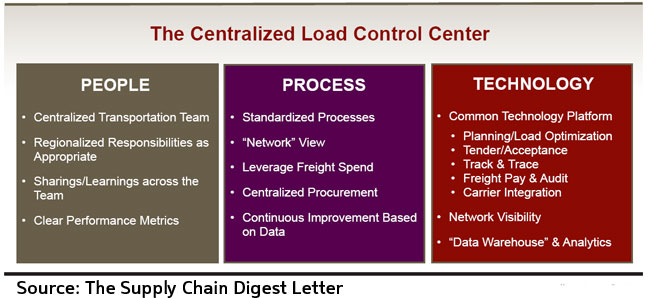SCDigest
Editorial Staff
| SCDigest Says: |
 The concept is expanding in some companies to a “shared services model,” in which a single centralized transportation group is set up to service the needs of multiple business units or divisions. The concept is expanding in some companies to a “shared services model,” in which a single centralized transportation group is set up to service the needs of multiple business units or divisions.

Click Here to See Reader Feedback
|
The following is an excerpt from our recent Supply Chain Digest Letter on Transportation Management. An electronic copy of the full Letter, plus an array of other information on transportation management and technology, is available at our Transportation Management Resources page.
Transportation is inherently an area that can benefit from at least a modest, and sometimes high, level of centralization. The concept of the centralized “load control center” (LCC) has been around for more than two decades. Most credit industrial giant 3M as building the first LCC in North America.
Over time, hundreds of other companies have followed suit, but many others still operate in a decentralized mode. What is a load control center? As seen in the graphic below, it is an approach to transportation in which most transportation planning and sourcing functions, and some execution processes, are pulled together into a single group, rather than being managed regionally or at individual ship sites.

The benefits of the LCC concept are many, and include:
- Ability to centralize transportation sourcing and better leverage total freight spend;
- Development of standard processes that are consistent, rather than the disparate transportation processes found inherently in decentralized operations;
- Greater efficiency – generally, a fewer number of planners are needed in total than when transportation is being managed at each site;
- Improved opportunities for optimization through combining shipments or loads that were not visible to the planners previously;
- Improved overall professionalism;
- Improved electronic integration with carriers;
- Opportunity for improved overall network visibility; and
- Improved metric management and therefore the chance to spot opportunities and drive continuous improvement.
(Transportation Management Article - Continued Below)
|